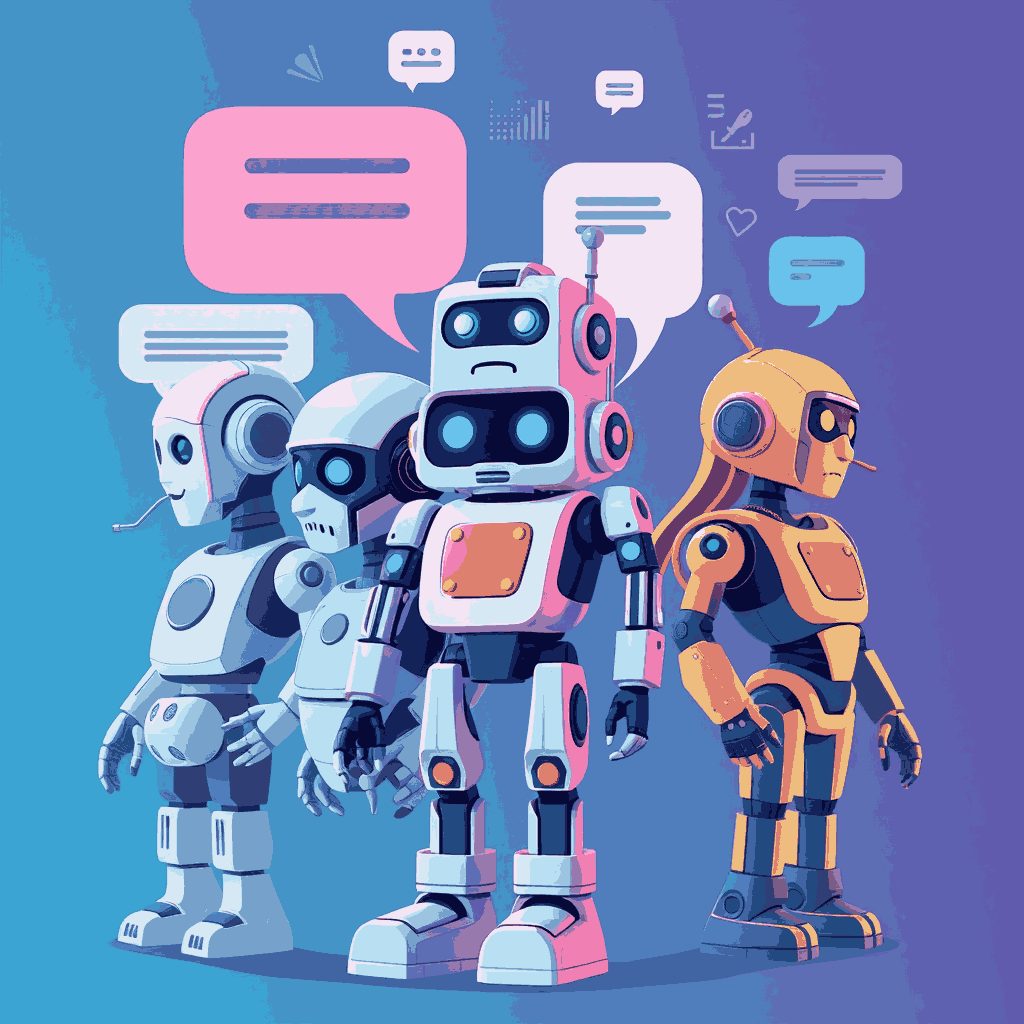Different Types of AI Chatbots
Admin LetMeCheck
September 10, 2024
What Are the Different Types of AI Chatbots?

AI chatbots have rapidly evolved, offering a range of solutions tailored to different interaction needs. From simple rule-based systems to sophisticated large language models, each type of chatbot brings unique capabilities to the table. Understanding these different types helps in selecting the right chatbot for specific applications, whether it’s handling straightforward tasks, adapting to complex queries, or providing highly natural conversations. This exploration of chatbot types highlights how technological advancements are expanding the potential of AI-driven interactions across various industries.
Key Highlights
- Different types of AI chatbots cater to various needs, ranging from simple rule-based systems to advanced models using large language technology. Each type has distinct features and applications suited to specific tasks.
- Machine learning chatbots stand out for their ability to improve and adapt over time through learning from interactions, unlike rule-based chatbots that rely solely on pre-defined rules.
- Hybrid chatbots offer a notable opportunity by combining the strengths of rule-based and machine learning approaches, enabling both efficient handling of routine tasks and adaptability to complex queries.
- Large Language Model (LLM) chatbots are equipped with extensive training data, allowing them to generate highly natural and contextually relevant responses, which enhances user interaction and engagement.
- The variety of AI chatbot types reflects their versatility and growing sophistication, providing solutions that range from simple automation to complex, human-like interactions, thus broadening their impact across different industries and applications.
What Are Rule-Based Chatbots?
Rule-based chatbots are like the traditional “if-then” scripts of the chatbot world. They follow a set of pre-defined rules to interact with users. Imagine having a flowchart where every decision leads to a specific response. If you ask a rule-based chatbot a question it hasn’t been programmed to answer, it might get stuck or give an incorrect response. These chatbots are great for handling straightforward, repetitive tasks and are easy to set up. However, their ability to handle complex or unexpected questions is limited.
How Do Machine Learning Chatbots Work?

Machine learning chatbots are a bit more advanced and can learn from interactions over time. Unlike rule-based chatbots, they use algorithms to improve their responses based on past conversations. Think of them as students who learn from experience. If a machine learning chatbot frequently encounters a certain type of question, it will get better at handling similar queries in the future. They are good at understanding context and can adapt to more complex queries, making them more flexible and capable compared to rule-based chatbots.
What Makes Hybrid Chatbots Unique?
Hybrid chatbots combine the best of both worlds: rule-based and machine learning. They use predefined rules for straightforward tasks but also employ machine learning to handle more complex or evolving queries. This means they can efficiently manage common questions while improving their performance over time. It’s like having a chatbot with a built-in safety net; it can follow set instructions and learn from interactions, making it more versatile and robust.
What Are Large Language Model (LLM) Chatbots?
Large Language Model (LLM) chatbots are the cutting-edge of chatbot technology. They use advanced models, like GPT-4, to understand and generate human-like text. These chatbots can hold more natural conversations and handle a wide range of topics due to their extensive training on diverse datasets. Think of them as highly knowledgeable and conversational experts. They can understand nuances, generate creative responses, and provide detailed information, making them incredibly powerful but also more resource-intensive to develop and maintain.
Conclusion

AI chatbots come in various types, each with its strengths and weaknesses. Rule-based chatbots are simple and straightforward, while machine learning chatbots offer flexibility and adaptability. Hybrid chatbots combine these approaches for a balanced solution, and large language model chatbots push the boundaries with sophisticated, human-like interactions. Choosing the right type of chatbot depends on your needs, whether you require straightforward automation or advanced conversational capabilities.
FAQ
1. What is the main difference between rule-based and machine learning chatbots?
Rule-based chatbots follow strict, predefined rules to respond to user inputs, while machine learning chatbots use algorithms to learn from interactions and improve their responses over time.
2. Can hybrid chatbots handle both simple and complex queries?
Yes, hybrid chatbots combine rule-based and machine learning approaches, allowing them to manage straightforward tasks efficiently while also improving their performance on more complex queries.
3. Are large language model (LLM) chatbots more advanced than other types?
Yes, LLM chatbots use advanced models like GPT-4 to generate human-like responses and handle a wide range of topics, making them highly capable but also more resource-intensive.
4. How do machine learning chatbots improve over time?
Machine learning chatbots improve by analyzing past interactions and learning from them. This allows them to adapt to new questions and better understand user intent over time.
5. What are the main benefits of using a hybrid chatbot?
Hybrid chatbots offer the benefits of both rule-based and machine learning approaches, providing efficient handling of common queries while also learning and adapting to more complex interactions.
